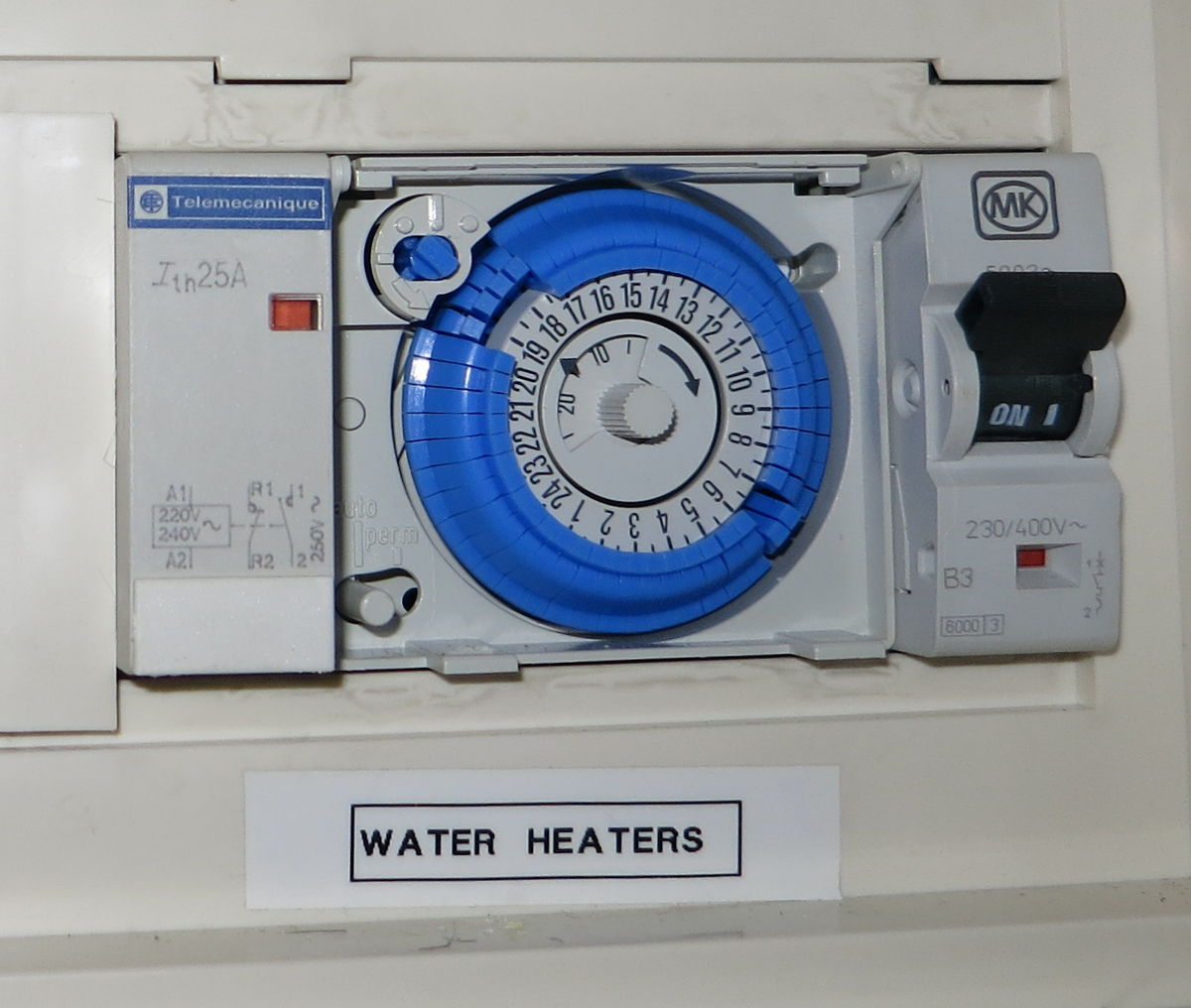My friend just rented an appartment (in the UK), and during the inventory the janitor showed her the programmable water heater, and said it was configured to turn on for a few hours during the day.
However, due to (1) extremely high energy bills, and (2) apparent contradiction w.r.t. the instructions, we suspect the janitor may have inversed the program, leaving the water heater on for almost the entire day. I cannot convince myself either way, so I'd like some advice about it.
Here's what the panel currently looks like:

And here's the instructions, printed and glued to the back of the panel door (the relevant part is the lower half):

These instructions seem to contradict what the janitor said: the example says "the jumpers are pushed in from 9 a.m. to 10 p.m." in the picture, which would indicate that the actual heater is on during most of the day (and night), the opposite of what the janitor said. However, since he seems to be working for the residence for several years, such a mistake is very unlikely. But then why do the instructions seem to indicate the opposite?
Note: there is no easy way to physically confirm if the heater is on or off at a given moment: there are no LEDs on the panel nor on the heater itself, and there is no discernible noise during the transition. The energy meter is outside and due to other appliances (e.g. refrigerator, towel rail, ventilation, etc.) you can't easily isolate the energy consumption.
